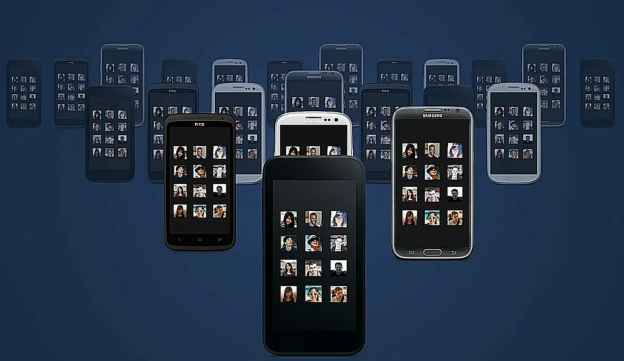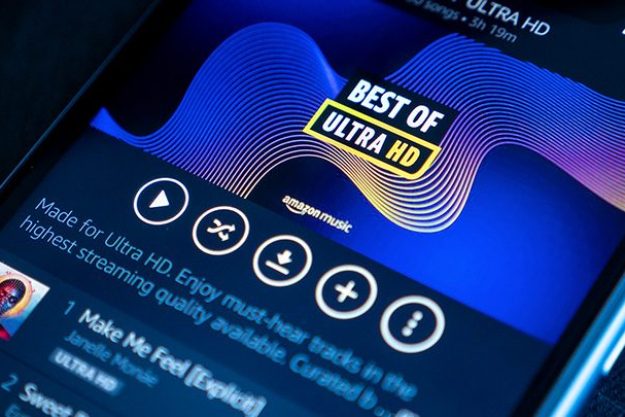
We’ve been waiting for some time to find out just what Facebook was going to reveal at today’s press conference. Would it be a new phone? Would it be a new operating system? Speculation was running rampant. Finally, we found out what the Palo Alto company had up its sleeves. In a way, it was a little of both.
At today’s event, Mark Zuckerberg and the Facebook crew unveiled the company’s latest innovation: Facebook Home. Essentially, it’s the happy medium between having a Facebook phone or operating system. It’s an app that you can install from the Google Play Store that will take over your homescreen and replace it.
The premise behind Home? As Zuckerberg said earlier today, “Our phones today are designed around apps, not people. We want to flip that around.” And flip, it certainly did.
What is the Cover Feed?
Once the program has been installed, when you turn on your phone, you’ll see big images that take over the entire face of your device. This is your interactive news feed. Adam Mosser, director of production at Facebook, explained the details. “It will automatically slide from story to story.” If there’s no image associated with the post, the user’s cover photo will fill up the background.

Interested in taking a better look at one of the photos that slides by? Press the screen and hold, and the image will zoom out. Tap again to return to the feed. Double-tapping will automatically like the photo on your behalf. There’s even a tiny comment icon on the bottom right. When done commenting, simply swipe it away and you’ll return to the Cover Feed.
Notifications will pop up on the top of your Cover Feed, and you can opt to ignore or respond. If you tap one, you’ll automatically be taken to the app. Simply hit the home button and you’ll be taken back to the Cover Feed. Have multiple notifications you want to get rid of? Tap one and hold and they’ll all bundle together; swipe down and poof! They’re gone.
Want to get to your apps?
There are two ways: you can either swipe down, and your phone’s normal home page will appear, or you can press and hold the home button, and three icons will pop up: Facebook Messenger to the left, your apps at the top, and the most recent app you’ve used to the right.
What is Chatheads?
We were really impressed with this concept. Let’s say you’re deeply engrossed in a movie on your phone, or reading an article … anything really, and you get a text message. Traditionally, when this happens, you have no choice but to exit the app you’re in, and pop open the messaging app.

With Chatheads, a user’s profile picture will pop up in a little bubble at the top right corner of your screen, along with a text preview. The preview will disappear, but the bubble will stay. You’ll have the option to move the bubble to a position on your screen that is least intrusive, swipe it away so you don’t see it at all, or you can opt to open the message. But when you open, instead of closing out one app in lieu of another, it simply opens an overlay over your active app. Chat away as long as you want, and when you’re done, close the chat and you’re right back where you left off.
When a Chathead icon is open on your screen, you can even switch apps to your heart’s content, and it will remain. It will stay there until you want it to go away.
How can I get Facebook Home?
Starting next Friday, April 12, users with select Android phones (see below) will be given the option to start downloading the software. First, make sure you have the most up-to-date version of Android your phone can support, and then make sure your Facebook is updated as well. Then launch the Facebook app and you’ll see an option to download. You’ll be taken to the Android store, and shortly after, bam, you’ll be the proud owner of Facebook Home.
If you’re apprehensive about making the switch, fret not: when you first launch Home, in standard Android fashion, it will prompt you to select whether you want to use it just once or always. So if you just feel like taking it for a spin at first, you can. If you fall in love, next time you launch, you can switch to always.
What phones does it work on?

When it launches, Home will be available on several Android devices — HTC One and One X, Samsung Galaxy S3 and S4 (down the line) and Note 2 — via download through the Google Play Store, starting April 12.
In addition, Facebook worked closely with HTC to create the first phone that comes integrated with Home right out of the box, the HTC First. The sleek-looking phone, which comes in red, powder blue, black, and white, will start selling the same day that Home launches, and will be exclusive to AT&T. Preorders can be made through AT&T; it will sell for just $100 with a two-year contract. Unfortunately, aside from built-in Facebook Home integration, we don’t have more spec information.
Is it for you?
So there you have it. It’s not quite the Facebook phone so many people were anticipating, but it sort of is, in its own way. We can’t wait to get our hands on it and try it out for ourselves. Will you be downloading it next Friday? If and when you do, we’d love to hear your feedback. Let us know in the comments below.
Editors' Recommendations
- The Apple Watch is the best iPhone camera accessory you didn’t know you needed
- This is the best smart accessory you didn’t know you needed
- Are WhatsApp and Facebook down? Here’s what you need to know
- Is Temu legit? Everything you need to know about the shopping app
- Everything you need to know about the massive AT&T outage


